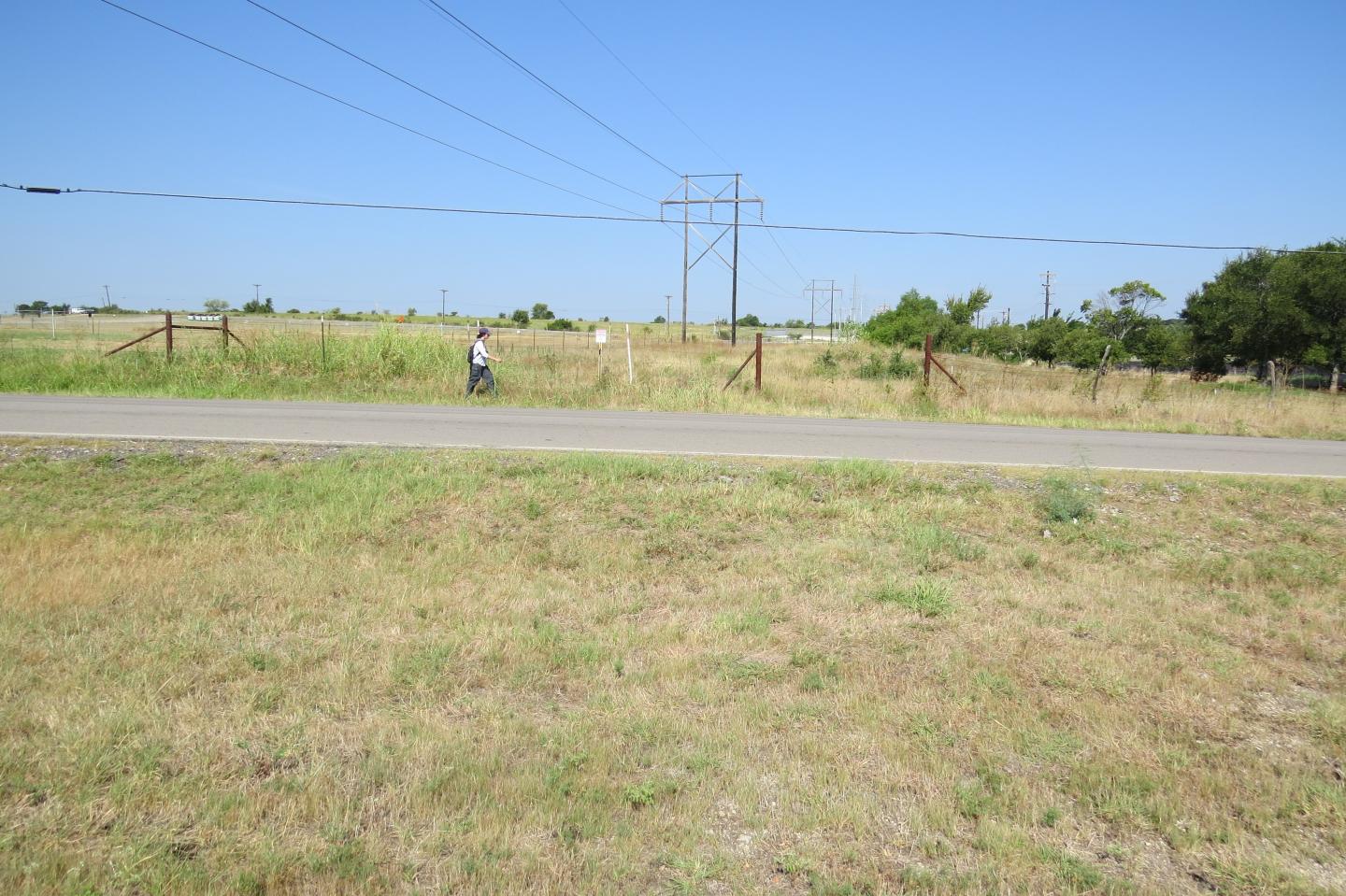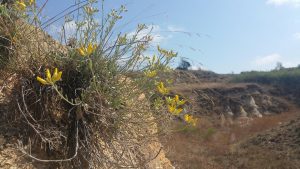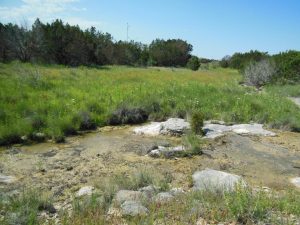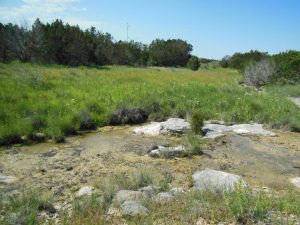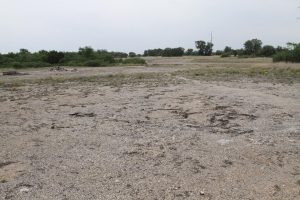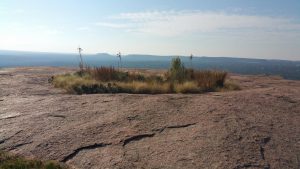Related Links
Pediomelum reverchonii (Reverchon’s scurfpea)
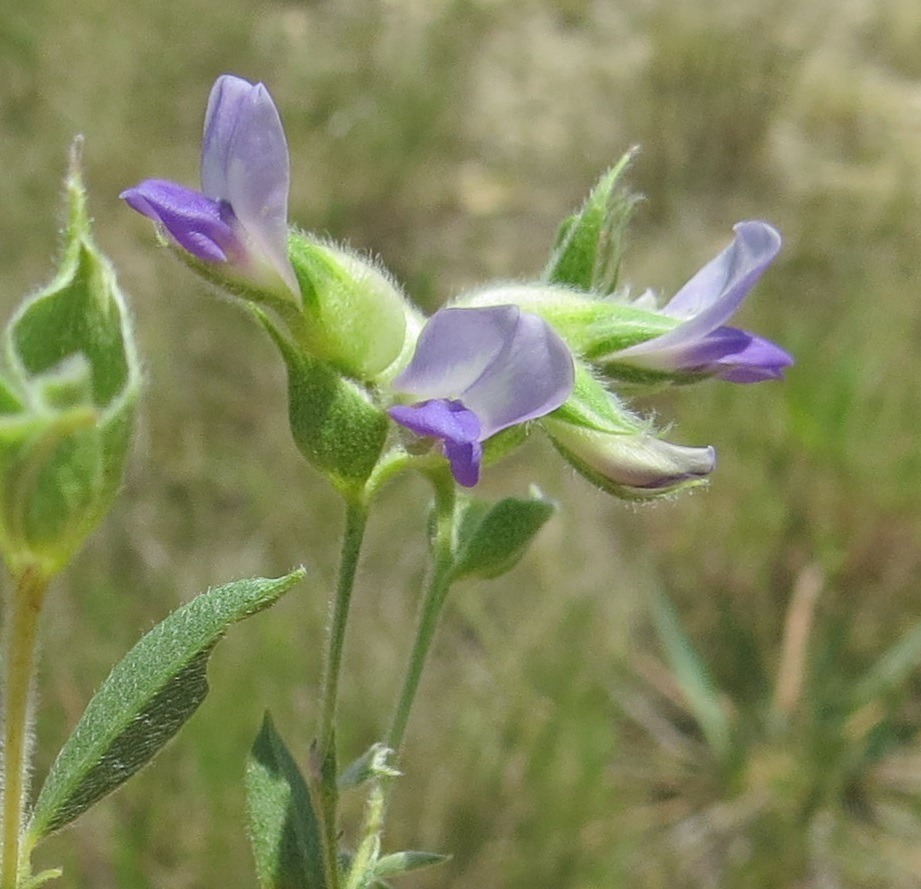
Introduction
Pediomelum reverchonii (S. Watson) Rydb. (Fabaceae) or Reverchon’s scurfpea, is a bushy-branched perennial forb growing to 120 cm in height (Diggs et al. 1999). Flowers are purple, 10 to 15 mm long. Inflorescences are arranged in a loose spike-like raceme with three to seven flowers each at the ends of stems. Pediomelum reverchonii often co-occurs with other similar members of the genus, including P. linearifolium, P. cuspidatum, and P. cyphocalyx. These taxa are all relatively tall with cauline leaves and could be confused for P. reverchonii, particularly prior to flowering. Pediomelum reverchonii can be distinguished from these similar taxa by its highly-branched stems, larger flowers (> 10 mm), and its ovate-orbicular floral bracts contracted to a narrow sharp point and greater than 6 mm wide. Pediomelum reverchonii is the only one of these taxa flowering in the summer, while the others flower from April to June.
Pediomelum reverchonii has a global conservation status of G3 (Vulnerable), indicating a “restricted range, relatively few populations (often 80 or fewer), recent and widespread declines, or other factors making it vulnerable to extirpation” (NatureServe 2017). It has a state conservation status of S2 (Imperiled), indicating a “very restricted range, very few populations (often 20 or fewer), steep declines, or other factors making it very vulnerable to extirpation from the nation or state” (TXNDD 2017). Pediomelum reverchonii is documented from eight counties in Texas, and six counties in Oklahoma (Kartesz 2015). Approximately 15 sites are known from Oklahoma (NatureServe 2017). Ten element occurrence records are tracked within the Texas Natural Diversity Database. Pediomelum reverchonii grows in rocky, limestone soils. Diggs et al (1999) note the habitat as “Limestone outcrops.” All sites occur in the Cross Timbers level III ecoregion, with Texas plants confined almost exclusively to the Fort Worth Prairie and the associated limestone outcrops on the eastern edge of the West Cross Timbers.
The Fort Worth Prairie and Lampasas Cut Plain, a system of limestone prairies with Fort Worth at its center, together form the central band within the Cross Timbers region. This region in particular is under-explored botanically, with significant range expansions discovered in recent years (Taylor et al. 2012; Taylor & O’Kennon 2013, 2014). SGCN within this region face the imminent threat posed by the rapid growth of Fort Worth and surrounding areas, but without a thorough understanding of the distribution and habitat needs of these rare species, we cannot begin to comprehend the impact this urban expansion will have on them, let alone work toward their conservation. Pediomelum reverchonii is one such SGCN within the region. This project seeks to fill the information needs for this species to better understand its current range and status in the Fort Worth Prairie.
Results
Ten Element Occurrence records are mapped for Pediomelum reverchonii in the TXNDD. Twenty-seven herbarium specimens of P. reverchonii were located. Nine additional records were identified from iNaturalist, three additional sites were identified from interviews with regional botanists, and ten new sites were found during field work. A total of 29 unique populations were identified in Texas. The oldest record for Pediomelum reverchonii in the state dates back to 1877 but 18 of the 29 populations were first observed in the last 20 years.
Twenty five of the 29 populations were visited in the summers of 2016 or 2017. Plants were observed at or in close vicinity to all 25 of the populations surveyed. A total of 9890 plants were documented, with several thousand more observed but not counted. Sites with plants present had an average of 395 plants per site with one site having as few as three plants and one site supporting an estimated 3500 plants.
Several roadside populations continued on adjacent private property, but most ended abruptly beyond the fence line. Those populations that did occur in glades and open prairie habitat were typically in areas that do not appear to be regularly grazed, with the exception of Bear Creek Ranch, where cattle are carefully managed to prevent overgrazing.
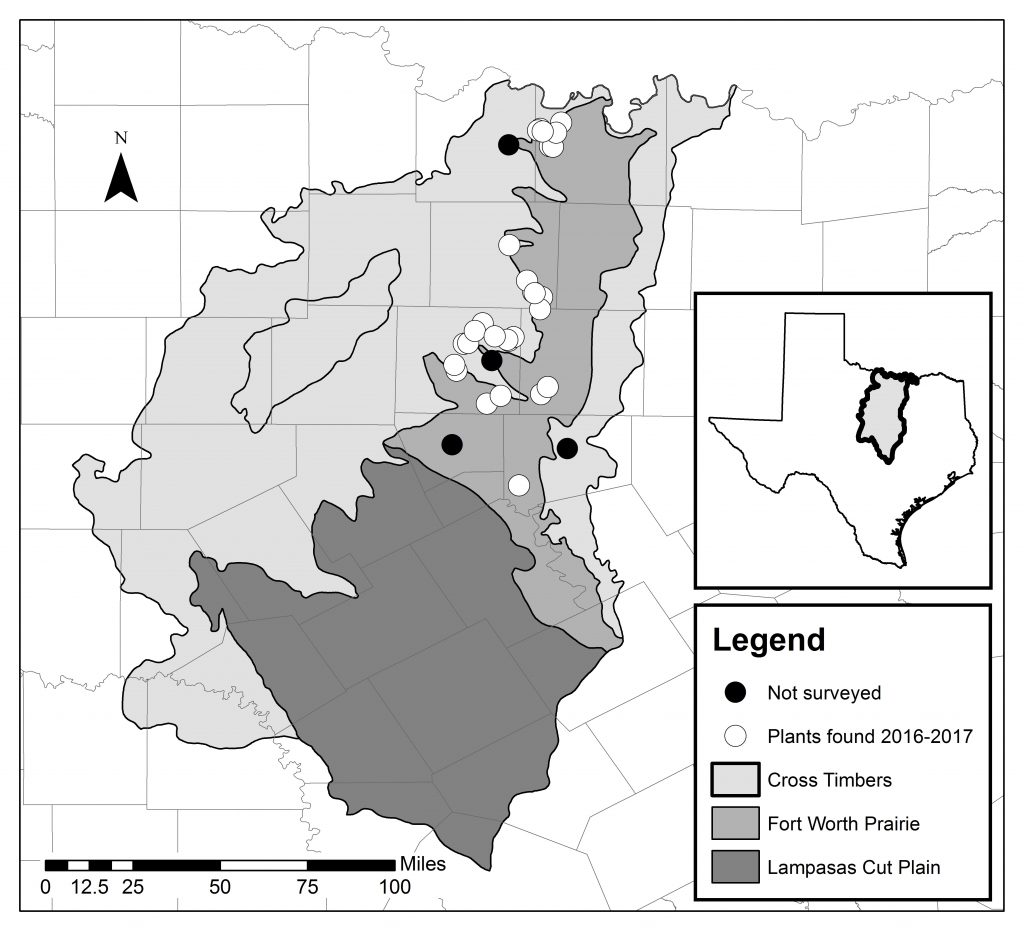
Habitat
Pediomelum reverchonii appears to be endemic to the limestone regions within the Cross Timbers level III ecoregion, including the Fort Worth Prairie and Lampasas Cut Plain. Most populations are located in the Fort Worth Prairie. The Fort Worth Prairie and Lampasas Cut Plain are underlain by Cretaceous limestones, clay, or mudstone formations (Stoeser et al. 2005). Topography across the regions vary with gently sloping hills and cuestas in the Fort Worth Prairie to flat-topped mesas and escarpments in the Lampasas Cut Plain. The uniting characteristics across the region include shallow limestone soils overlying layers of resistant limestone. Specimen label information indicates P. reverchonii is found in shallow limestone soils, a habitat which is abundant within the region.
Field observations indicate Pediomelum reverchonii grows in thin to moderately deep soils over Cretaceous limestones. Twenty-one of the sites occur overtop the Walnut Clay formation, a Cretaceous, fossiliferous, erosion resistant limestone (Stoeser et al. 2005). Five additional sites mapped to Antlers or Paluxy sand, the formation directly below Walnut Clay. However, all sites were confirmed as limestone in the field and these likely represent errors in mapping. Four locations occur over Kiamichi limestone, one over Duck Creek limestone, and one in undifferentiated Fredericksburg limestones. Several sites span multiple of these formations. Goodland limestone lies between Walnut and Kiamichi, but plants were rarely seen in these and other softer limestones and mudstones of the region.
Threats
Several threats to Pediomelum reverchonii plants were recorded in the field. The most significant threat is Transportation and Service Corridors (plants along roadsides), with several additional threats with a low impact: Tourism and Recreation Areas, Agriculture and Aquaculture, Energy and Mining, Human Intrusions and Disturbance, Natural Systems Modifications, Invasive Species, Geologic Events, and Climate Change and Severe Weather.
Conservation Status and Implications
Pediomelum reverchonii currently has a global conservation status rank of G3 (Vulnerable) and a state rank for Texas of S2 (Imperiled). The species is endemic to limestone soils in the Cross Timbers level III ecoregion. In Texas, there are a total of 55 records representing 29 natural breeding populations. Twenty-five populations had plants present in the 2016 or 2017 survey period. Plants were found at all sites visited. The only sites without plants were those with poor location information or sites where access was not obtained. This suggests there have been few to no losses of populations in recent years. One location (Tyler Bluff) was first documented in 1946 and plants were found in 2017. With the exception of the large percentage of plants occurring in road right of ways, few other threats seem to be threatening populations.

Thank you to the Texas Parks and Wildlife Conservation License Plate Grants for funding this project!
Purchase your Conservation License Plate today to support conservation in Texas.

